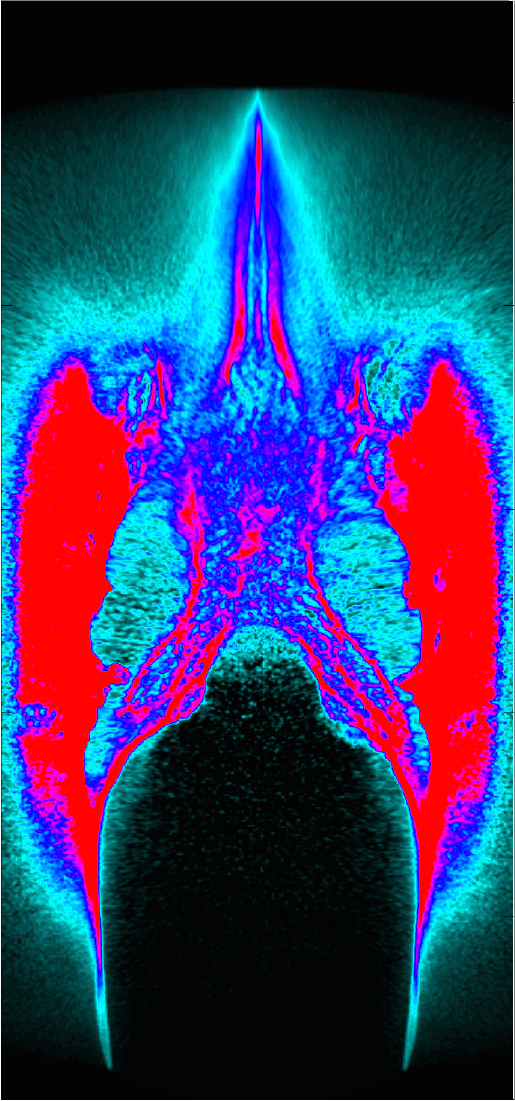Monoenergetic ion beam from improved laser-induced magnetic vortex acceleration

High quality ion beam can potentially be used for wide-ranging fields. The advent of ultra-hight intensity laser provides access to laboratory-sized compact ion accelerator via the intense accelerating fields in the laser-plasma interactions. Magnetic vortex acceleration (MVA) is proposed to produce collimated energetic ion beams in near-critical/underdense gas plasmas. Furthermore, the gas plasma allows the laser ion acceleration to be operated with a high repetition rate. The picture shows the generation of a collimated ion beam (moving upward along the vertical axis of the picture) when a relativistic laser is incident into an underdense plasma. However, for the conventional MVA, the number of accelerated ions are rather low and the corresponding spectrum is exponentially decreasing. We have proposed in our research an advanced target design in which the underdense plasma is contained within an overdense tube. In such integrated targets, the electrons in the tube can be replenished to the central channel, leading to a high and sustained electron density in the channel. So, the electric current and its associated magnetic/electric fields remain strong in the time scale of the pulse duration. Monoenergetic and collimated ion beams with much higher particle number can therefore be produced.
Fore more information, see W. Zhang et al., Monoenergetic ion beam acceleration from transversely confined near-critical plasmas by intense laser pulses, Physics of Plasmas 24, p. 093108 (2017), available here.








